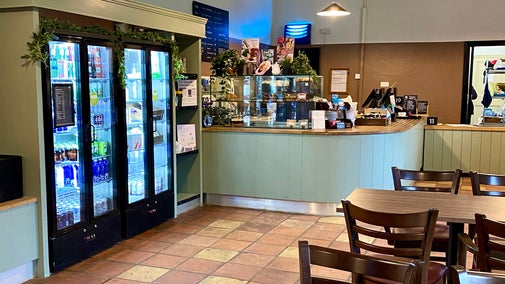
Blickling Estate's collections
Explore the objects and works of art we care for at Blickling Estate on the National Trust Collections website.

Mentioned in the Domesday Book, Blickling Estate is believed to have been the birthplace of Anne Boleyn, future wife of King Henry VIII. During the Second World War, RAF air crew were billeted here while its owner, Lord Lothian, influenced Winston Churchill’s actions.
The Tudor house that once stood at Blickling is widely believed to have been the birthplace of Anne Boleyn, great-granddaughter of Sir Geoffrey Boleyn (1406–1463,) and later one of the six wives of King Henry VIII. Sir Geoffrey bought Blickling Estate from Sir John Fastolf in 1452.
The present red-brick mansion was built by Sir Henry Hobart (1560–1626) after he purchased the estate in 1616.
The house was built on the same site as Sir Geoffrey Boleyn's, by architect Robert Lyminge, who was already known for building Hatfield House. The moat remains from Tudor times, as Sir Henry used this as a perimeter to control his budget.
In the 1740s, Sir John Hobart converted Blickling's Long Gallery into an impressive library after being bequeathed a vast book collection by renowned scholar Sir Richard Ellys.

Little is known about the long tenure of Lady Caroline Hobart (1767–1850) and her husband, who became Lord Suffield in 1810 as, despite inheriting Blickling in 1793, it wasn't until the late 1820s that she made her mark on the house, garden and park.
Lady Suffield approached landscape designer Humphry Repton for informal advice, as they had previously worked together at Gunton Hall. The result was that Humphry's son, John Adey Repton, worked on Blickling's flower beds and garden structures. Humphry himself had painted Lady’s Cottage in the Great Wood on the estate in 1780 – one of his earliest known watercolours.
Around the same time, Lady Suffield also commissioned fashionable London architect Joseph Bonomi to design Blickling's iconic Mausoleum as a memorial to her late father.

During the Suffields' tenure, Blickling twice escaped destruction by fire. The first occasion was in 1808, when people came from Aylsham to fight the blaze. Afterwards, the town was thanked with significant gratuities.
The second fire broke out at the house in April 1849, a year before Lady Suffield's death. On this occasion, staff exposed themselves to fire and smoke to the point of near suffocation, until the fire was put out.
William Schomberg Robert Kerr, the 8th Marquess of Lothian (1832–1870), inherited Blickling Estate when he was just nine years old, and it was during his time that many changes were made to Blickling Hall.
In the 1850s, the west wing of the house was rebuilt to accommodate a new kitchen, a laundry room, a brew house and game larders, with only the Jacobean front wall being retained. The estate's waterworks were also remodelled, and gas was introduced.
After William married his first cousin, Lady Constance Talbot, in 1854, the couple spent years travelling, and this influenced the décor in the house. As well as Gothic features, they introduced European, Asian and North African patterns.
William Kerr died at the age of just 38 after battling with a disease he'd contracted in India. His life-sized, carved effigy can be found on his tomb in Blickling Church.
Philip Kerr, the 11th Marquess of Lothian (1882–1940), is vital to the story of the National Trust. Without him, it’s unlikely Blickling Estate would still be around for you to explore – nor the hundreds of other places you love. Philip was the driving force behind the National Trust Act of 1937 and the creation of the Country Houses Scheme.
This enabled the first large-scale transfer of mansion houses to the Trust in lieu of death duties, preserving some of the UK's most beautiful buildings for everyone to enjoy, forever.
Lord Lothian was a leading statesman, forging a career as secretary to the then-Prime Minster, Lloyd George, and as ambassador to the USA. He played an important part in encouraging America to join the war effort. In fact, it was he who persuaded Churchill to write the historic letter to President Franklin Roosevelt, which, for the first time, gave the Americans an unequivocal statement of Britain's depleted military strength.
He was also a member of the so-called ‘Cliveden Set’ of the 1930s, and used Blickling to entertain the country’s first female MP, Nancy Astor, Prime Minister Stanley Baldwin, comedienne Joyce Grenfell and, controversially, German ambassador Joachim Von Ribbentrop.

Explore the objects and works of art we care for at Blickling Estate on the National Trust Collections website.
Discover more about Blickling Hall, in Norfolk, a Jacobean mansion thought to be the birthplace of Anne Boleyn, and sits in a historic park.

In collaboration with family history website Findmypast, we've been exploring the 1921 Census of England and Wales. It's helped us get closer to the lives of people at Blickling Estate, including American heiress and Blickling Hall tenant Zelia Hoffman, who stood for election as a Liberal MP in 1928. Discover more about these stories at Blickling, as well as research from nine other places in our care. By clicking this link, you’ll access a third-party website. Please see their privacy policy for how they handle your personal data.

If you'd like to lose yourself in a garden full of character and historic features, Blickling Estate has something for every visitor.

There's much more to Blickling Estate than its famous house. Covering 4,600 acres with 950 acres of woodland and parkland and 3,500 acres of farmland, Blickling Estate is great for exploring alone, with family or your four-legged friends.

Offering delicious, locally sourced and produced food, stop at one of the cafés, browse in the shop or grab a bargain in the second-hand bookshop.

Learn about people from the past, discover remarkable works of art and brush up on your knowledge of architecture and gardens.
